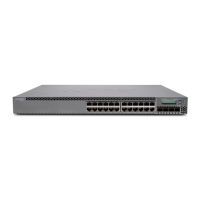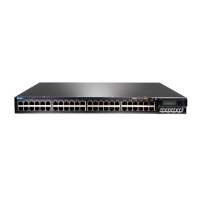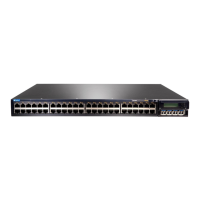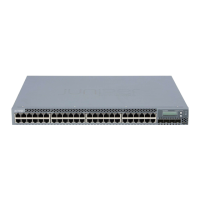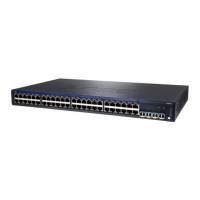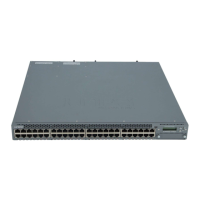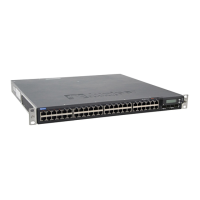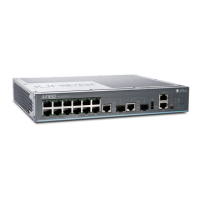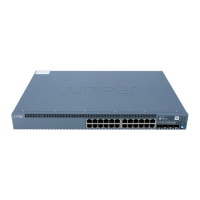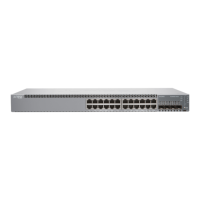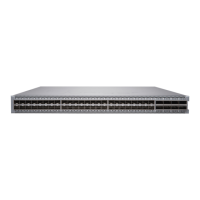Configuring DHCP on a Switch
A DHCP configuration consists of two parts: the configuration for a DHCP server and the
configuration for DHCP clients. The DHCP server configuration is simple if you accept
the default configurations.
When you configure a legacy DHCP server, you only need to define the DHCP server name
and the interface on the switch. You can use the default configuration for the rest of the
settings. When you configure an extended DHCP server, you need to only define a DHCP
pool, indicate IP addresses for the pool, and create a server group. You can use the default
configuration for the rest of the settings.
For directions for configuring either a legacy DHCP server or an extended DHCP server,
see Configuring a DHCP Server on Switches (CLI Procedure).
To configure a DHCP client, set the client’s DHCP interface address in the [edit interfaces
interface-name unit 0 family inet dhcp] hierarchy. For directions for configuring a DHCP
client on a switch, see “Configuring a DHCP Client (CLI Procedure)” on page 17.
How DHCP Works
DHCP consists of a four-step transfer process beginning with a broadcast DHCP discovery
message from the client. As the second step, the client receives a DHCP offer message
from the server. This message includes the IP address and mask, and some other specific
parameters. The client then sends a DHCP request message to accept the IP address
and other parameters that it received from the server in the previous step. The DHCP
server sends a DHCP response message and removes the now-allocated address from
the DHCP address pool. See Figure 2 on page 6.
Figure 2: DHCP Four-Step Transfer
NOTE: Because the DHCP discovery message from the client is a broadcast
message and because broadcast messages cross other segments only when
they are explicitly routed, you might have to configure a DHCP relay agent
on the switch interface so that all DHCP discovery messages from the clients
are forwarded to one DHCP server.
Related
Documentation
Configuring a DHCP Client (CLI Procedure) on page 17•
• Configuring a DHCP Server on Switches (CLI Procedure)
Copyright © 2017, Juniper Networks, Inc.6
DHCP and Other System Services Feature Guide for EX2300, EX3400, and EX4300 Switches
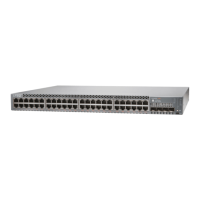
